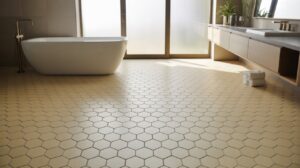The perfect backsplash can transform your kitchen from ordinary to extraordinary, but many homeowners overlook one crucial detail: the edges. How you finish your tile backsplash edges can make or break your kitchen’s overall aesthetic. Whether you opt for sleek metal profiles, classic bullnose tiles, or creative tile backsplash edge treatments, these finishing touches provide both visual appeal and practical protection. The right backsplash trim not only conceals rough tile edges but also creates a polished, professional look that elevates your entire kitchen design. In this comprehensive guide, we’ll explore various backsplash tile edge trim options to help you achieve that perfect finishing touch for your kitchen renovation.
Understanding Design Styles and Edge Pairings
Selecting the right tile edge backsplash finish depends largely on your kitchen’s overall design aesthetic. Modern kitchens with clean lines often benefit from sleek metal tile backsplash edge treatments, while traditional spaces may call for classic bullnose edges. Rustic kitchens shine with wooden trim accents that add warmth and character. The key is harmony—your backsplash trim should complement existing elements like cabinetry, countertops, and fixtures. For example, a farmhouse kitchen with shaker cabinets pairs beautifully with simple ceramic tile edges, while contemporary spaces with quartz countertops might call for minimalist backsplash tile trim solutions that create clean, uninterrupted lines.
Table of Contents
ToggleBullnose Edges: The Timeless Tradition
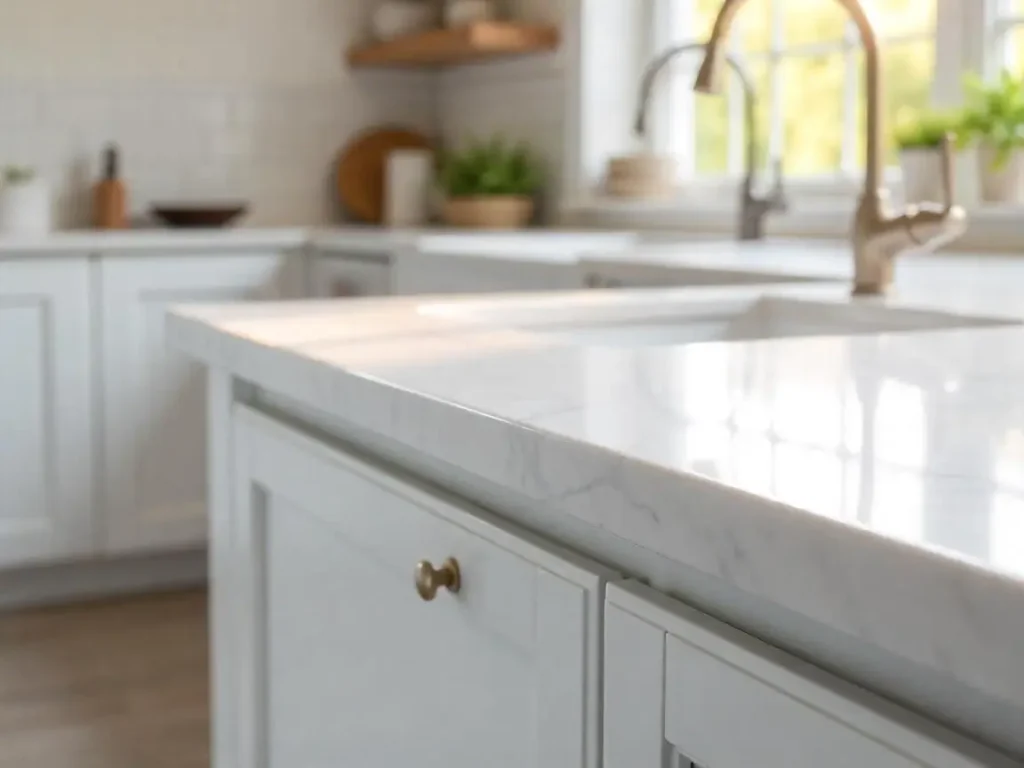
Bullnose edges represent one of the most classic approaches to finishing tile backsplash edges. These specially manufactured tiles feature one rounded edge that creates a smooth, finished look perfect for traditional and transitional kitchens. When selecting bullnose tiles for your backsplash tile edge trim, consider matching them precisely to your backsplash tiles for a cohesive appearance.
Bullnose edges work particularly well with ceramic and porcelain tiles, offering a clean solution for backsplash trim tile needs. For best results, choose bullnose pieces in the exact same color and material as your main backsplash to ensure seamless integration. Many tile manufacturers produce coordinating bullnose pieces specifically designed to match their tile collections.
Design tip: For a more distinctive look, consider contrasting bullnose edges in a complementary color that picks up accent tones from elsewhere in your kitchen. This approach to tile edge backsplash finishing can create subtle visual interest without overwhelming the space.
Metal Edges: Sleek and Contemporary
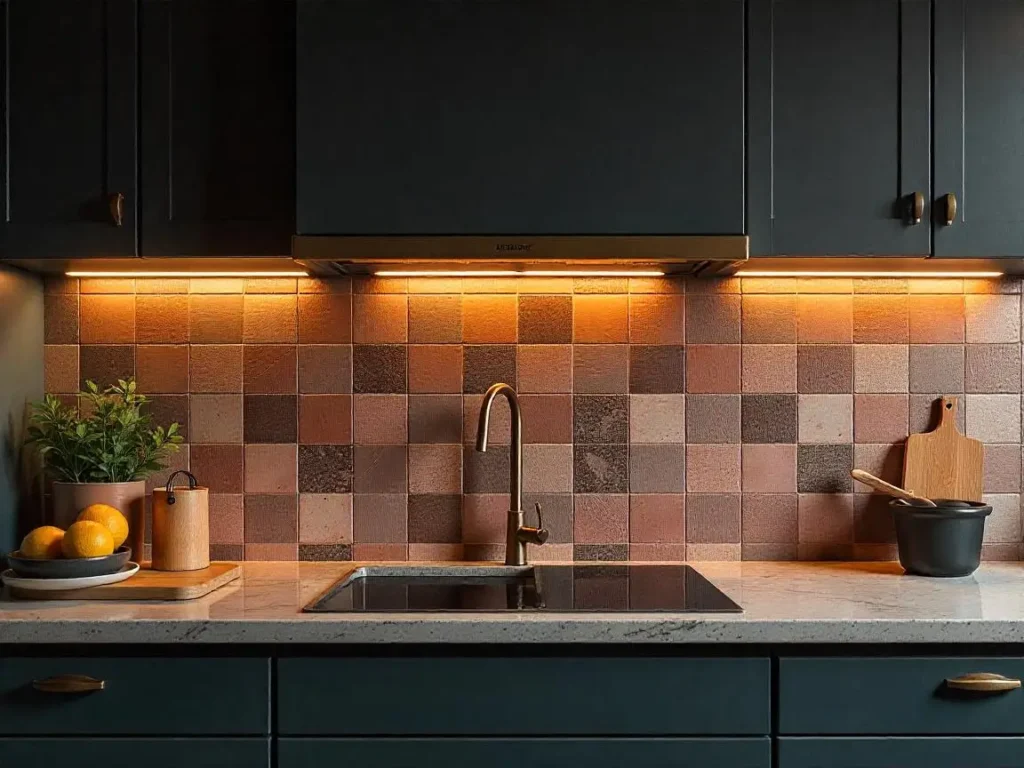
Metal profiles offer a modern solution for finishing tile backsplash edges with sleek, clean lines. These backsplash tile trim pieces not only protect tile edges from chips and damage but also create striking visual borders that can define your backsplash area with contemporary flair.
When selecting metal tile edge backsplash treatments, consider how they’ll coordinate with your kitchen’s hardware and appliances. Stainless steel profiles complement modern kitchens with similar-finished appliances, while brushed nickel or chrome options offer versatility across design styles. For warmer kitchens, consider copper or bronze metal backsplash trim tile options that add rich, inviting tones.
The profile shape matters too—straight metal edges create minimalist, crisp lines, while slightly curved profiles offer a softer transition. These metal edge solutions have become increasingly popular for their durability and ability to create clean, professional-looking transitions between backsplash and counter surfaces or at exposed edges.
Pencil Trim: Adding a Touch of Elegance

Pencil trim provides a refined option for finishing tile backsplash edges with a touch of sophisticated detail. These slender, cylindrical tiles—typically measuring about half an inch in diameter—create elegant borders around your backsplash tile edge areas. Available in ceramic, porcelain, glass, and natural stone, pencil trim offers versatile backsplash trim tile options for various design aesthetics.
In traditional kitchens, ceramic pencil trim in complementary colors can frame subway tile backsplashes beautifully. For more contemporary spaces, glass pencil trim adds a subtle gleam to tile edge backsplash areas while creating visual separation between different materials or colors.
Creative combinations can elevate your design further—try pairing pencil trim with decorative tile inserts for custom tile backsplash edge treatments that reflect your personal style. For instance, a marble pencil trim can elegantly frame a mosaic accent strip, adding dimension and interest to your backsplash while providing a finished look at edges and transitions.
Glazed-Edge Tiles: Minimalist Chic
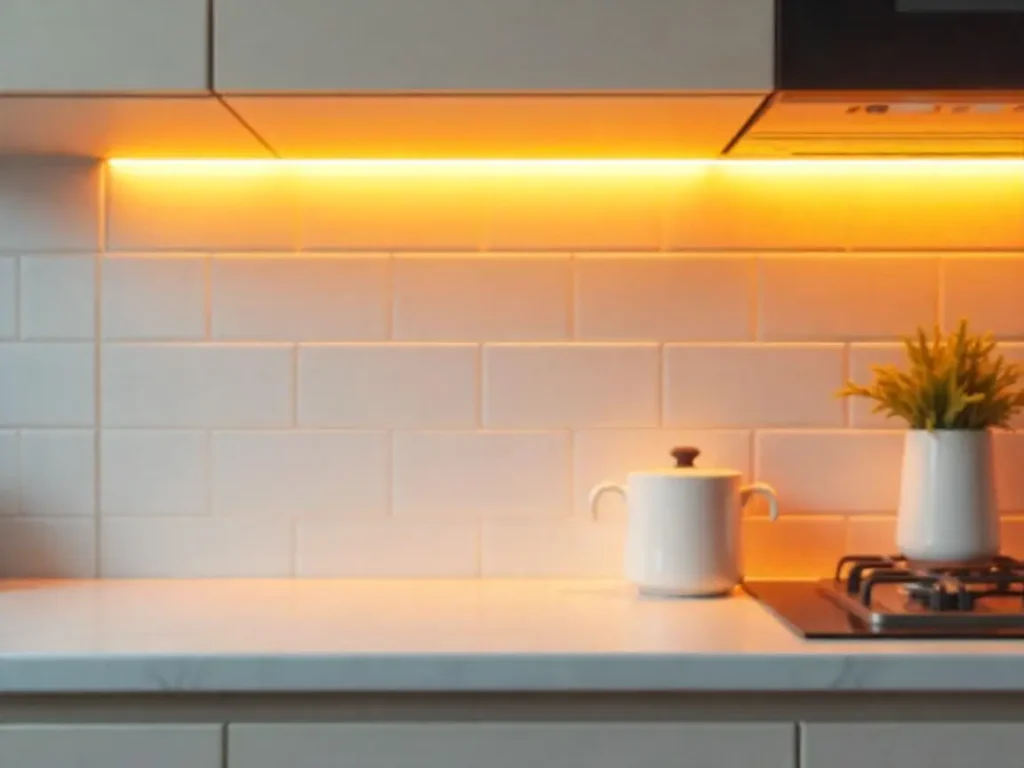
Glazed-edge tiles offer a modern, streamlined approach to finishing tile backsplash edges without additional trim pieces. These specialty tiles feature glazed edges on one or more sides, eliminating the need for separate backsplash tile edge trim by creating a finished appearance on their own.
This minimalist approach works beautifully in contemporary kitchens where clean lines and uninterrupted surfaces are prized. The glazed edges create a cohesive look that flows seamlessly, particularly effective with monochromatic color schemes or when using large-format tiles.
When selecting glazed-edge tiles for your backsplash trim tile solution, consider color palettes that complement rather than contrast with your countertops. Soft whites, creams, and light grays offer timeless appeal, while deeper blues, greens, or blacks can create dramatic focal points. For visual interest without additional trim, consider arranging glazed-edge tiles in herringbone, stacked, or other geometric patterns that showcase the clean edges as part of the overall design aesthetic.
Caulked Edges: Seamless Integration
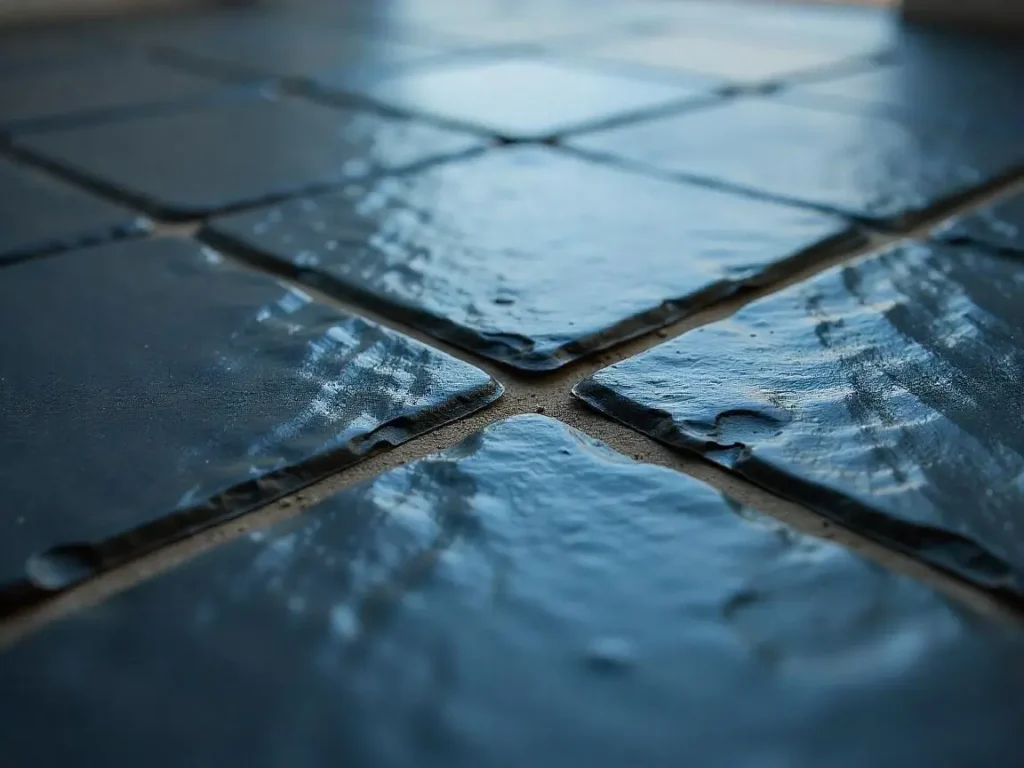
For a minimalist approach to tile backsplash edge finishing, properly applied caulk creates a clean, seamless transition that’s both practical and visually appealing. This technique works particularly well when your backsplash meets painted walls or when you want to minimize visual transitions in contemporary kitchen designs.
The key to successful caulked tile edge backsplash finishing lies in selecting the right caulk color. For a truly seamless look, choose caulk that precisely matches your grout color. Alternatively, match your caulk to the wall color where the backsplash trim tile would typically go for an uninterrupted visual flow.
Apply caulk with precision along exposed backsplash tile edges using a caulk gun with a smooth, steady motion. After application, immediately smooth the bead with a damp finger or specialized caulk tool before it sets. This simple backsplash trim approach requires minimal materials while delivering a clean, professional finish that works particularly well in modern kitchen designs where less is more.
DIY Bullnose: The Artistic Edge

Creating your own custom bullnose edges offers a creative solution for unique tile backsplash edge treatments when pre-made trim isn’t available or doesn’t match your vision. This approach allows for total customization of your backsplash tile trim while showcasing your craftsmanship.
To create DIY bullnose edges, you’ll need specialized tile edge finishing tools like a tile file, rubbing stone, or wet saw with a bullnose blade attachment. First, cut your tiles to size, then carefully shape and smooth the exposed edge using progressive grits of sandpaper until the edge is rounded and smooth. Finally, apply a clear sealant to the finished edge for protection and visual consistency.
This technique works particularly well for creating custom mosaic-style edges where multiple tiles and materials come together. By hand-finishing each tile edge backsplash piece, you can create one-of-a-kind borders that incorporate multiple colors or materials. While more labor-intensive than pre-made backsplash trim tile options, the results offer unmatched customization and artistic expression for truly unique kitchen designs.
Wood Trim: Rustic Charm
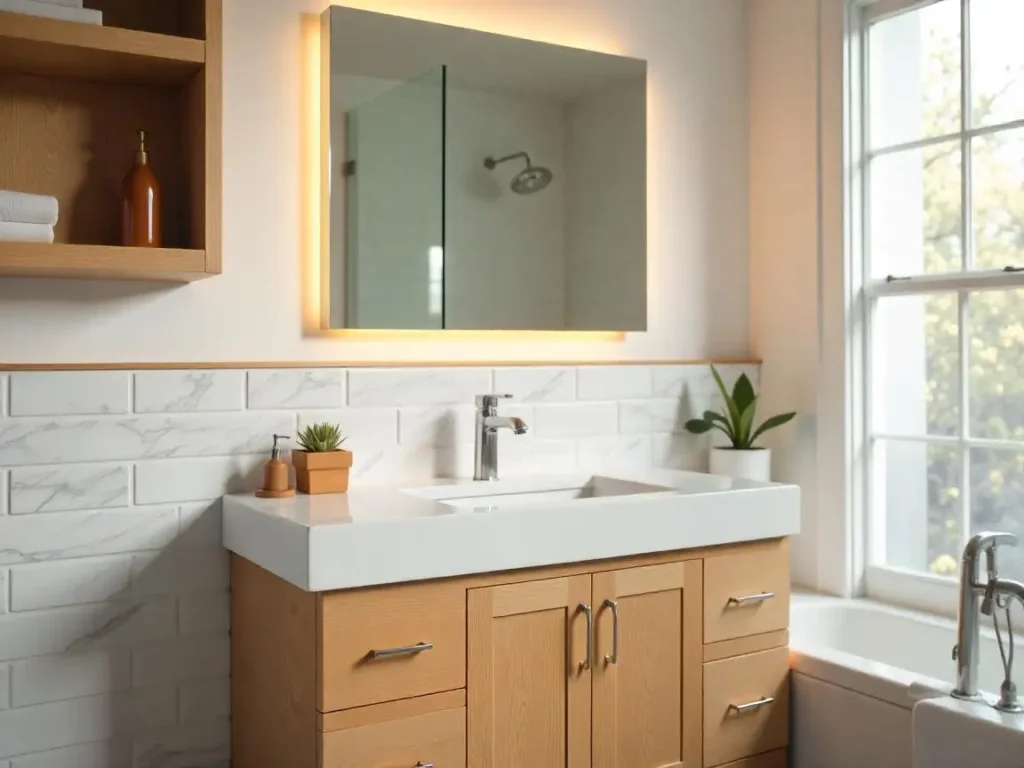
Wood trim offers a warm, inviting alternative to traditional tile backsplash edge materials that adds distinctive character to your kitchen. This backsplash trim tile alternative works beautifully in farmhouse, cottage, or rustic-inspired kitchens where natural materials take center stage.
When selecting wood for tile edge backsplash finishing, consider both appearance and practicality. Hardwoods like oak, maple, or cherry offer durability in kitchen environments, while pine provides a more budget-friendly option with natural knotty character. Quarter-round molding or flat trim pieces can be stained to complement your cabinetry or painted to match or contrast with your existing color scheme.
Before installation, all wood backsplash trim needs proper sealing to protect against moisture. Apply multiple coats of polyurethane or kitchen-grade wood sealer to prevent warping or damage near sinks and cooking areas. When installing, miter the corners for professional-looking joints and secure the trim with finishing nails and construction adhesive for a lasting finish that beautifully frames your tile backsplash edges.
Mixing and Matching: Creative Combinations
Breaking design rules often leads to the most distinctive and personalized kitchens, and mixing different backsplash tile edge trim approaches can create truly unique results. Consider combining complementary materials for tile edge backsplash treatments that reflect your personal style while adding visual interest.
Successful mixed-edge designs might include metal pencil trim alongside bullnose tiles, or wood trim accents with glazed-edge tiles. The key is creating intentional contrast while maintaining visual balance. For example, a subway tile backsplash might feature metal edge profiles along the countertop line while using bullnose tiles at vertical ends for a softer transition.
When mixing backsplash trim tile styles, maintain consistency in either color or texture to ensure cohesiveness. Try pairing materials with similar tones but different textures, or contrasting colors within the same material family. This thoughtful approach to finishing tile backsplash edges allows for creative expression while still delivering a polished, professional-looking result that elevates your kitchen design.
Special Focus: Natural Stone Edges
Natural stone backsplashes require special consideration when finishing tile backsplash edges due to their unique characteristics and luxury appeal. Materials like marble, granite, and travertine offer distinctive veining and coloration that demand thoughtful edge treatments to showcase their natural beauty.
For high-end stone backsplashes, consider custom edge profiles that complement the material’s natural features. Mitered edges create seamless corners that showcase veining patterns, while polished or honed edges offer elegant tile edge backsplash finishing options that highlight the stone’s natural texture. Custom-cut edge pieces from the same stone slab ensure perfect color matching and pattern continuity.
When designing with natural stone, consult with specialists who understand the material’s unique properties. Proper sealing is essential for all stone backsplash trim tile areas, particularly at edges where moisture might penetrate. For the most luxurious kitchens, consider continuity between countertop and backsplash edge treatments, perhaps carrying the same edge profile from counter to backsplash for a cohesive, high-end design statement.
Local Design Trends in Lowell, MA
In Lowell, Massachusetts, kitchen design trends reflect the area’s rich architectural heritage while embracing contemporary functionality. When it comes to tile backsplash edge treatments, local homeowners are increasingly blending traditional and modern approaches to create distinctive New England charm with updated flair.
Recent projects in Lowell show a preference for classic subway tiles with contemporary metal backsplash trim tile edging—a combination that honors the area’s historic homes while introducing modern elements. Local designers also report increased interest in custom tile edge backsplash treatments that incorporate materials sourced from regional suppliers, supporting the strong community-focused values of Lowell residents.
Many Lowell homeowners are finding inspiration in the city’s industrial past, using raw metal backsplash tile edge finishes that complement exposed brick and repurposed wood elements. Others draw from New England coastal influences, incorporating soft blue glass tiles with crisp white bullnose edges for a fresh, regional look. These locally-inspired tile backsplash edge solutions create kitchens that feel both timeless and distinctively “Lowell” in their aesthetic approach.
Budget-Friendly Design Options
Creating a stylish finished edge for your tile backsplash doesn’t necessarily require a luxury budget. Several affordable backsplash tile edge trim options can deliver professional-looking results without breaking the bank.
For cost-conscious renovations, consider these budget-friendly tile backsplash edge approaches:
- Plastic edge trim offers an inexpensive alternative to metal profiles while providing similar clean lines and edge protection. Available in various colors to match or complement your grout, plastic backsplash trim tile pieces install easily and cost significantly less than metal or custom tile edges.
- DIY edge finishing using simple tools can save substantial money compared to specialty trim pieces. With careful technique, standard tiles can be mitered at corners and edges sanded smooth for a finished look without additional materials.
- Strategic design planning that minimizes exposed tile edge backsplash areas can reduce the need for expensive trim pieces. Extending backsplashes to natural stopping points like cabinets or walls eliminates many exposed edges altogether.
- Paint-matched caulk offers perhaps the most economical backsplash tile trim solution, creating clean transitions where tiles meet walls with minimal material cost. This approach works particularly well in contemporary designs where clean lines are already part of the aesthetic.
With thoughtful planning and these budget-conscious backsplash trim approaches, you can achieve a high-end look for your kitchen without premium pricing.
Elevate Your Kitchen with Custom Craftsmanship
At SF Marble & Granite Inc., our backsplash installation service in Lowell transforms your kitchen into a stunning showcase of modern design and practical elegance by addressing the challenge of outdated, mismatched finishes with a tailored solution that seamlessly integrates custom tile trim and precise edge detailing; our expert team listens to your design aspirations and combines over a decade of craftsmanship with innovative techniques to deliver a cohesive look that complements your granite countertops and overall kitchen decor, ensuring that your renovation not only meets functional needs but also enhances the visual appeal and lasting beauty of your home.
Conclusion
Your tile backsplash edges might seem like a small detail, but they truly transform your kitchen’s look and functionality. Whether you opt for classic bullnose tiles, sleek metal trims, or creative custom finishes, these details add a polished, professional touch to your space. Explore your options and choose the style that best reflects your personal taste, and let the experts at SF Marble & Granite Inc. guide you through every step to ensure a perfect, seamless finish. Ready to upgrade your kitchen? Contact us today to begin your design journey.
FAQs
Why are backsplash edges so important?
They provide a polished look by concealing rough tile cuts and protecting against damage, ensuring your kitchen feels professionally finished.
What are some popular backsplash edge finishing options?
You can choose from sleek metal profiles, classic bullnose tiles, refined pencil trim, or even simple caulked edges. Each option brings its own style and level of durability to your design.
How do I select the right finish for my kitchen style?
Match your backsplash trim with your overall kitchen design. For modern spaces, consider minimal metal or glazed-edge tiles; for traditional settings, bullnose edges work beautifully; and for a rustic touch, wood trim can add warmth and character.
Can I install backsplash edge finishes myself?
Yes, DIY bullnose or caulked finishes are achievable with the right tools and some practice. However, if you’re unsure, a professional installation can help ensure a flawless, long-lasting result.
How do a well-finished backsplash edge and trim enhance my kitchen?
A well-chosen edge treatment ties your design together, protects your tiles, and adds a subtle yet impactful detail that elevates the overall look and functionality of your kitchen.



